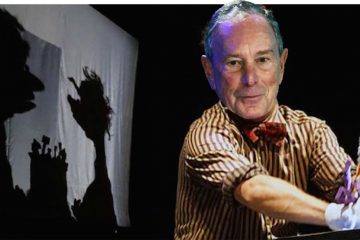Things Do Not Look Good for Mike Pence If Trump Is Impeached

Uh-oh (image from Rappler.com)
With Donald Trump’s impeachment all but certain, and the possibility of his subsequent conviction in the Senate growing a little less remote every day, it’s worth looking at what might happen if he does indeed leave the White House for good, rage-tweeting during Fox and Friends from Mar-a-Lago forever. Pretty much everyone knows that Vice President Mike Pence would then become President until Jan. 20, 2021, just as Gerald Ford did after Nixon’s resignation in 1974.
But who becomes Vice President? Under the terms of the 25th Amendment, adopted in 1967, the newly sworn-in president nominates someone to fill the vacancy for the job they just left, and the House and Senate confirm them in a simple majority vote. Yikes. If Trump does in fact go, Senate Republicans would almost certainly push for some ideologically horrid ghoul, to throw some red meat to their ever-rabid base. But House Democrats, flush with victory (for once) probably wouldn’t just let that one stand. There would be a stalemate, and with the closely divided Senate relying on a future vice president to break any possible tie votes, it could be hugely consequential.
Pence might be stealthily measuring the drapes in the Oval Office these days, but hoo boy, he might be about to enter a world of hurt. The vice presidency is not only constitutionally fragile, it’s also somewhat haunted, with no fewer than seven veeps dying in office and long periods of vacancy during troubled times in American history.
Even if Trump weathers this crisis, Pence should look to the past to see that very few Vice Presidents serve out two full terms (and there have long been whispers that Trump is thinking of dumping him as a running mate next year). Our current period of stability — during which Al Gore, Dick Cheney, and Joe Biden all managed to sail smoothly through for eight years in office that Vice President John Nance Garner once complained wasn’t worth “a bucket of warm piss” — is actually an aberration, unique across the centuries.

How all the Vice Presidents who became President got to that position (image from Huffington Post).
“Wait, what?” you might be saying. “I thought it was the presidency that was cursed.”
Well, sorta. Starting in 1840 with the ill-fated Harrison, who caught a cold during his Inauguration and died of pneumonia within weeks, every president elected in 20-year increments died in office. Abraham Lincoln, James Garfield, and William McKinley were shot, Warren Harding suffered a fatal heart attack in San Francisco’s own Palace Hotel, Franklin D. Roosevelt died of natural causes at a spa in Georgia, and John F. Kennedy was (obviously) assassinated. (Reagan was shot early in his first term, but swift medical attention saved his life — and broke the curse.)
Let’s go to the tape. As Lin-Manuel Miranda fans surely know, Thomas Jefferson banished Vice President Aaron Burr to the political nether regions after Burr shot Alexander Hamilton, replacing him with the amusingly named George Clinton. Clinton continued on under James Madison only to die in 1812. For his second term, Madison chose one Elbridge Gerry, for whom the term “gerrymander” is named. Gerry, who would be the oldest vice president for more than 100 years, also died in office, in 1814.
Not a promising start, although from 1817-25 the unremembered Daniel Tompkins— who won’t be coming to a dollar bill anytime soon — managed to be the first veep to serve for exactly eight years, a feat that wouldn’t be repeated for a century.
Then it gets uglier. Less than 20 years later, the ardently pro-slavery Vice President John C. Calhoun abruptly resigned to become a Senator from South Carolina, where he helped goad the nation on a path toward the Civil War. Then, in April 1853, William R. King — rumored to be the gay partner of future President James Buchanan — died of tuberculosis only six weeks into his term.

photo from tumblr
These deaths caused vacancies in the vice presidency that lasted for years, until the following election. But so did the deaths of various presidents who died in office, causing their veeps to ascend to the higher office. There have been no fewer than 18 times overall when the vice president’s desk languished unoccupied, totaling almost 11 years out of the 16 between 1841 and 1857. That that nation was seriously unraveling during that period should give us pause about the lack of a full government.
The deaths continued as staunch liberal V.P. Henry Wilson died in 1875 after a series of strokes, and Thomas A. Hendricks went to bed and never woke up in 1885. Garret Hobart died of heart disease in 1899, allowing Teddy Roosevelt to join William McKinley’s ticket in 1900 — and become president himself upon the former’s assassination in 1901. William Sherman died in October 1912, leaving President William Howard Taft stranded without a running mate only days before the election. It hardly mattered, anyway, as Taft was doomed to a crushing defeat in a multi-candidate race against Woodrow Wilson and T.R., whose running mate was the progressive California governor Hiram Johnson.
Taft actually came in fifth in California that year, earning a mere 0.58 percent of the vote and losing to Socialist Eugene V. Debs and even the Prohibition Party candidate. The worst performance by the GOP in California since then? Donald Trump and Mike Pence in 2016. Watch your back, Mr. Vice President.









